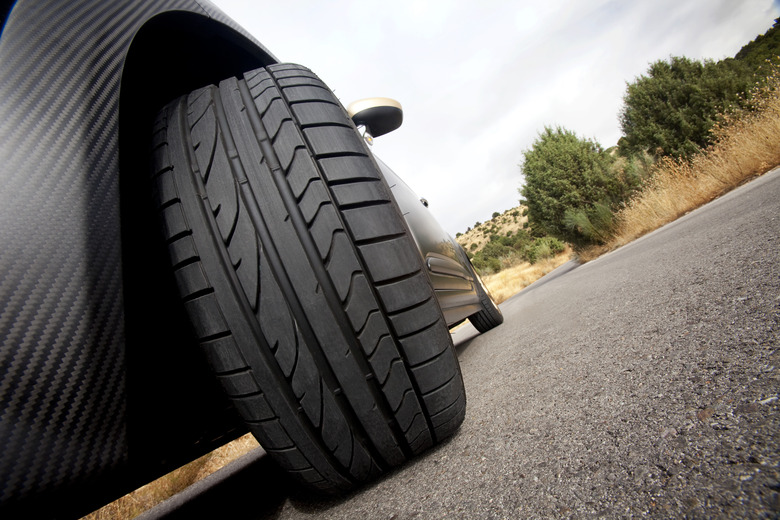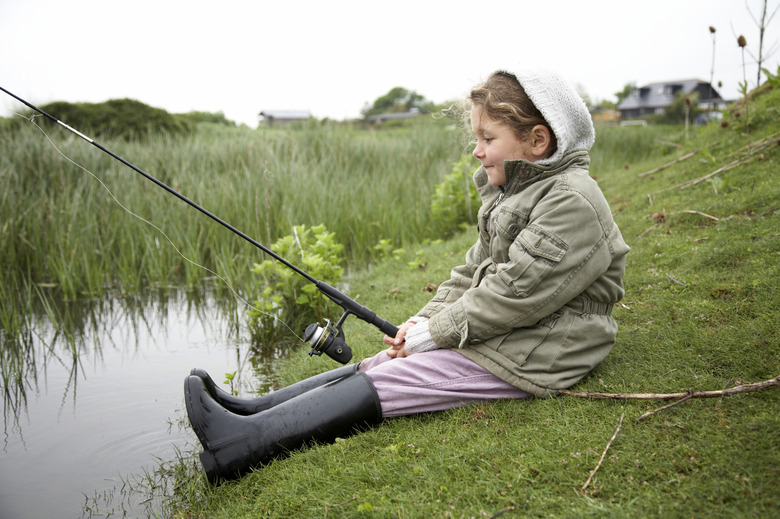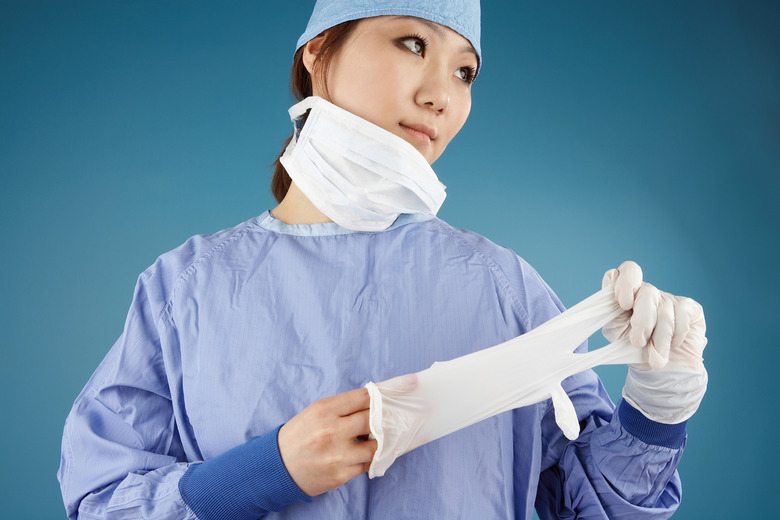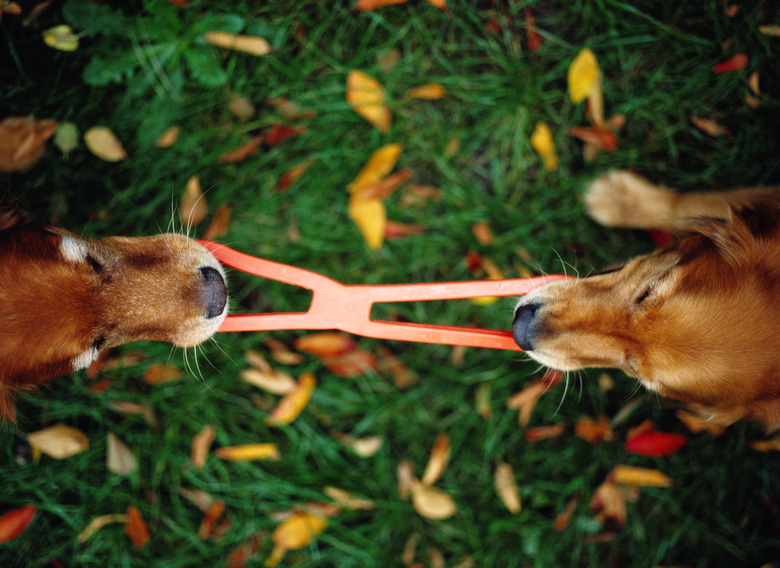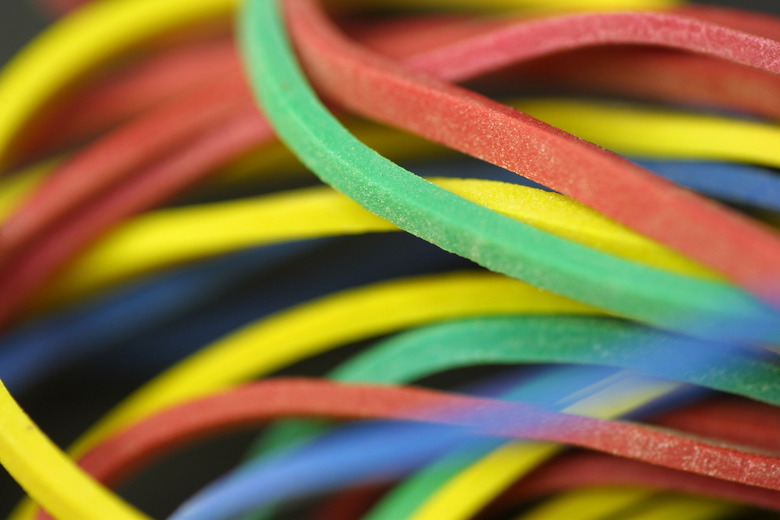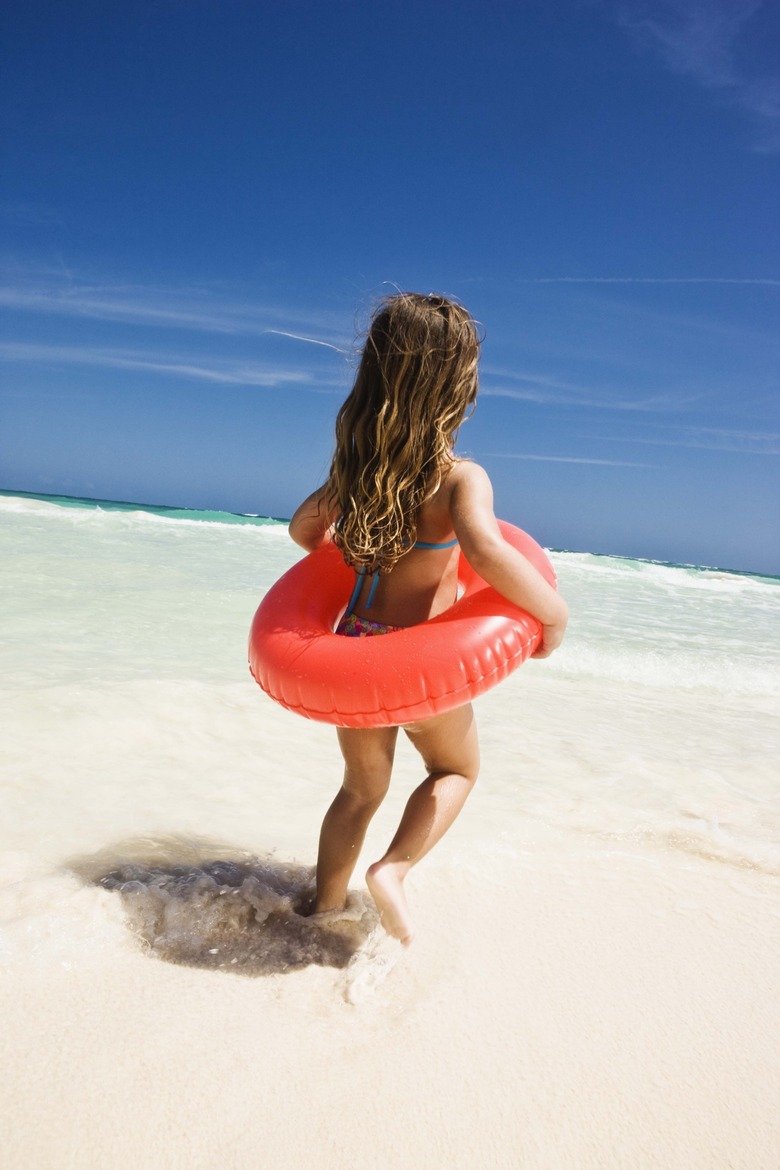Things Made From Rubber
Even though most people believe that rubber's first uses appeared in 19th century Europe, scientists discovered that in 1600 B.C., ancient Mesoamericans added the juice from morning glory species Ipomoea alba to natural latex from the Castilla elastica tree to make rubber balls, elasticized bindings and hollow figurines.
TL;DR (Too Long; Didn't Read)
Taken from the sap of tropical trees, natural rubber and its products were part of a dying industry in the 1830s before Charles Goodyear developed vulcanization — the process that stabilized rubber by mixing heated natural latex and acids to made it stronger, pliable and not sticky. Without vulcanization, natural rubber turns into a sticky paste in the summer and a cold and hardened breakable mass in the winter. Goodyear turned a pair of Wellington boots, named after Arthur Wellsly, the first duke of Wellington and Napoleon's defeater, into rubber boots. In the early 19th century, Goodyear opened a shoe company, mass producing canvas-topped shoes with rubber soles for children, a brand name known as _Keds_.
Home and Garden
Home and Garden
The average household uses synthesized rubber in everything from elasticized bands in clothing and hair ties, to dishwashing gloves, toys, jar seals and tires. Starting at the welcome mat at the front door of a home, and moving to the garden hoses out back, people use hundreds of rubber products during their lives. Other household rubber items include boots, raincoats, pond liners, mattresses and cushions, pillows, grips on garden tools, bathtub plugs, doorstops, earplugs, hot water bottles, aquarium tubing, faucet washers and rug backings.
Medical and Laboratory Use
Medical and Laboratory Use
Despite the fact that 5 to 10 percent of all health care workers have allergic responses to natural latex rubber, it remains a staple material source for surgical tubing and gloves in labs and medical facilities. Nitril and Neoprene, brand-name formulas that represent synthetic rubbers, are used to make corks for lab flasks and vials, chemical-resistant mats and pads, birth-control devices, prosthetics and other specialized products and equipment.
Pets and Livestock
Pets and Livestock
People that have pets understand the value of unbreakable grooming, play and feeding objects. Rubber food and water bowls come in sizes for every pet from Chihuahuas to horses and you can buy a staggering array of chew toys and balls as well. On the practical side, foam rubber mattress pads, stall mats, elasticized vet wraps, flea collars, shed mitts and rubber combs are all rubber products to help your pets look and feel their best.
School and Office
School and Office
Both schools and office utilize rubber bands and pencil erasers — or rubbers — as the British call them. This name originated with the discovery that the elasticized substance rubbed out pencil marks. Other common rubber items found in schools and offices include mouse pads, keyboards, adhesives and rolling chair wheels. Anti-fatigue mats, carpet underlayment, headphone pads and rubber stamps represent some of the useful rubber items found in offices and schools.
Fun and Games
Fun and Games
It would not be summer without swimming rafts and inner tubes, rings and darts for toss games, basketballs, volleyballs, badminton shuttlecocks, tennis shoes, crocks and flip-flops or those foam beverage cozies used to keep drinks cool. Other recreational-related rubber items include inflatable beds for camping, playground tiles, rubber ducks, sportswear and scuba gear.
Cite This Article
MLA
Stephenson, Deborah. "Things Made From Rubber" sciencing.com, https://www.sciencing.com/things-made-rubber-6744912/. 23 April 2018.
APA
Stephenson, Deborah. (2018, April 23). Things Made From Rubber. sciencing.com. Retrieved from https://www.sciencing.com/things-made-rubber-6744912/
Chicago
Stephenson, Deborah. Things Made From Rubber last modified March 24, 2022. https://www.sciencing.com/things-made-rubber-6744912/
